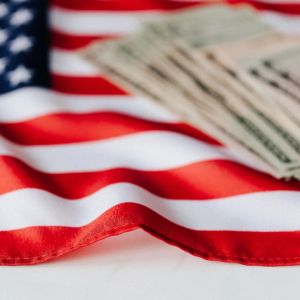According to Commerce Department data, Foreign Direct Investment (FDI) in the US dropped to $52.8 billion in the first quarter of 2025, down from a revised $79.9 billion in Q4 2024. The decline coincided with business uncertainty surrounding President Donald Trump’s tariff policies. However, the slowdown may be short-lived, as multiple foreign firms are launching multibillion-dollar manufacturing projects nationwide. Nippon Steel’s acquisition of US Steel for nearly $15 billion is also expected to boost FDI figures in the upcoming quarters. Trump’s tariff policies hinder investments in the US, slowing down the economy The lower first-quarter Foreign Direct Investment inflows contributed to a widening of the US current account deficit to a record high of $450.2 billion as businesses front-loaded imports ahead of Trump’s steep tariffs . The Commerce Department’s Bureau of Economic Analysis also said the fourth quarter’s current account data was revised to $312.0 billion, instead of the previously reported $303.9 billion. The data on the current account measures the net movement of goods, services, and investments in and out of the country. Notably, a big and longstanding US trade deficit has in the past been partially offset by investment inflows into US financial assets and foreign direct investment. This majorly consists of plant and equipment, corporate mergers, and acquisitions. Meanwhile, the first-quarter FDI inflows were the smallest in dollar terms since the $42.4 billion in the fourth quarter of 2022, a time of high post-pandemic inflation. Other than that drop, quarterly FDI has been above $61 billion since the COVID-19 pandemic eased, reaching a high of $135 billion in the third quarter of 2021, the Commerce Department reported. Economists have cautioned that the ongoing uncertainty surrounding Trump’s tariffs might hinder companies from making investment choices and could slow economic growth. On the other hand, Trump claims that his tariffs are causing a surge in investments as companies try to bring manufacturing back to the US to avoid these tariffs. Paul Ashworth, a chief North American economist at Capital Economics, shared his opinion on the topic of discussion. According to Ashworth, while uncertainty could have influenced some investment decisions, quarterly FDI was difficult to forecast and could be influenced by specific transactions, like mergers, acquisitions, or large projects. He called the first-quarter figures “probably noise” instead of suggesting a more serious issue regarding FDI entering the US. Economists warn against the longer-term risk to the dollar In the first quarter, the US current account deficit grew to an all-time high because companies rushed to bring imports to avoid President Donald Trump’s large tariffs on imported goods. The Commerce Department’s Bureau of Economic Analysis said the current account deficit, a measure of the flow of goods, services, and investments into and out of the United States, surged from $138.2 billion, or 44.3%, to a record of $450.2 billion. Fourth-quarter data was revised to show the shortfall at $312.0 billion instead of $303.9 billion, as reported last month. Economists polled had also anticipated the deficit would increase in the fourth quarter to $443.3 billion. The deficit was equal to 6.0% of gross domestic product, the highest since the third quarter of 2006, when it was 6.3%. That was higher than 4.2% in the October-December quarter. Goods imports surged $158.2 billion to an all-time high of $1.00 trillion. That rise was driven mostly by nonmonetary gold and consumer goods, notably medicines, dental goods, and pharmaceuticals. Contrastingly, service imports dropped $1.8 billion to $217.8 billion. Reduced payments for using intellectual property, such as licenses for research and development results, primarily drove this decline. Still, economists cautioned that the growing current account gap and burgeoning federal government budget deficit represent a longer-term risk to the dollar. Furthermore, Trump’s across-the-board tariffs have dulled some of the dollar’s safe-haven status. KEY Difference Wire : the secret tool crypto projects use to get guaranteed media coverage



















